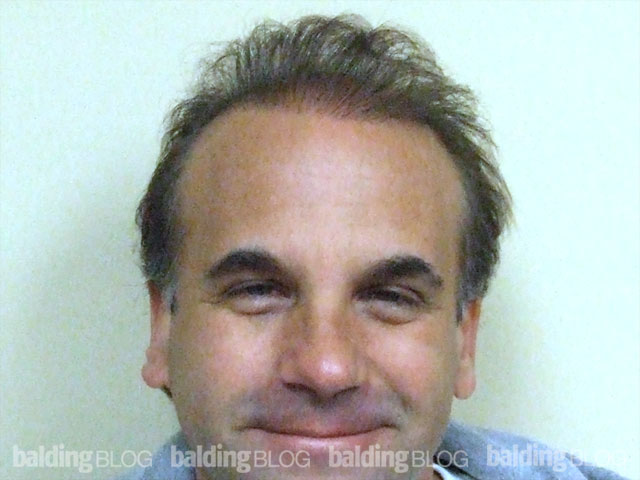First of all, thank you for the time you put into answering questions and posting them on your blog. I have found it a truly unique resource in the often troubling search for useful information on MPB and Hair Transplants. I am 27 years old and have been very slowly losing my hair since I was 20. All the loss has been in the form of a receding hairline and I am now probabaly only a norwood class 2 – 2.5. I have kept most of my hair most likely due to my use of propecia off and on for the past 5 years (2 years on and then 1 year off (like an idiot) and now 2 years back on). The outline of my hairline is now a normal mature hairline but it has slowly gotten thinner and thinner especially on one side while the other side has stayed relatively full. My question is two parts: Is it common to see significantly more miniaturization on one side of the hairline? Are there down sides to doing a hair transplant among those thin hairs to add density? Some might call me crazy for even considering such an option but the hair has gotten very thin and I would like to enjoy a full head of hair and not have to worry about covering up a balding area. I dont mind where my hairline stands but would really like to fill in the thinning area if there are not significant negative repercussions. My two biggest concerns are shock loss and what my hair might look like years down the road (will I have a small patch of transplanted hairs while everything else has thinned out or fallen out?). Thanks again for your time and this blog in general.

I am glad that you find my blog helpful. Thank you for your kind words.
It is not unusual for a person to show more hair loss on one side than the other. The reality is that the other side will catch up to the worse side eventually.
Transplantation may be an option, assuming that your hair loss extends beyond the class 2 pattern. If the miniaturization goes well into the existing hair, then a transplant AFTER you are on a course of Propecia, may be a reasonable option. Shock loss is rare if you are taking Propecia. Good planning with a good doctor will assure your best outcome concerning your final appearance and should prevent you from having islands of hair. This requires a master plan for your short and long term hair loss, because hair loss is a progressive process. Since you are in Los Angeles, you should call my office at 800-NEW-HAIR or visit the Request Additional Info page to setup a free consultation in our LA office, or better yet, come to one of our Open House events where you can see a patient surgery, meet many patients who had the transplants done by me and meet other patients who had surgery done by others so you can compare apples to apples.


